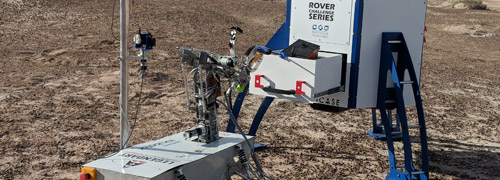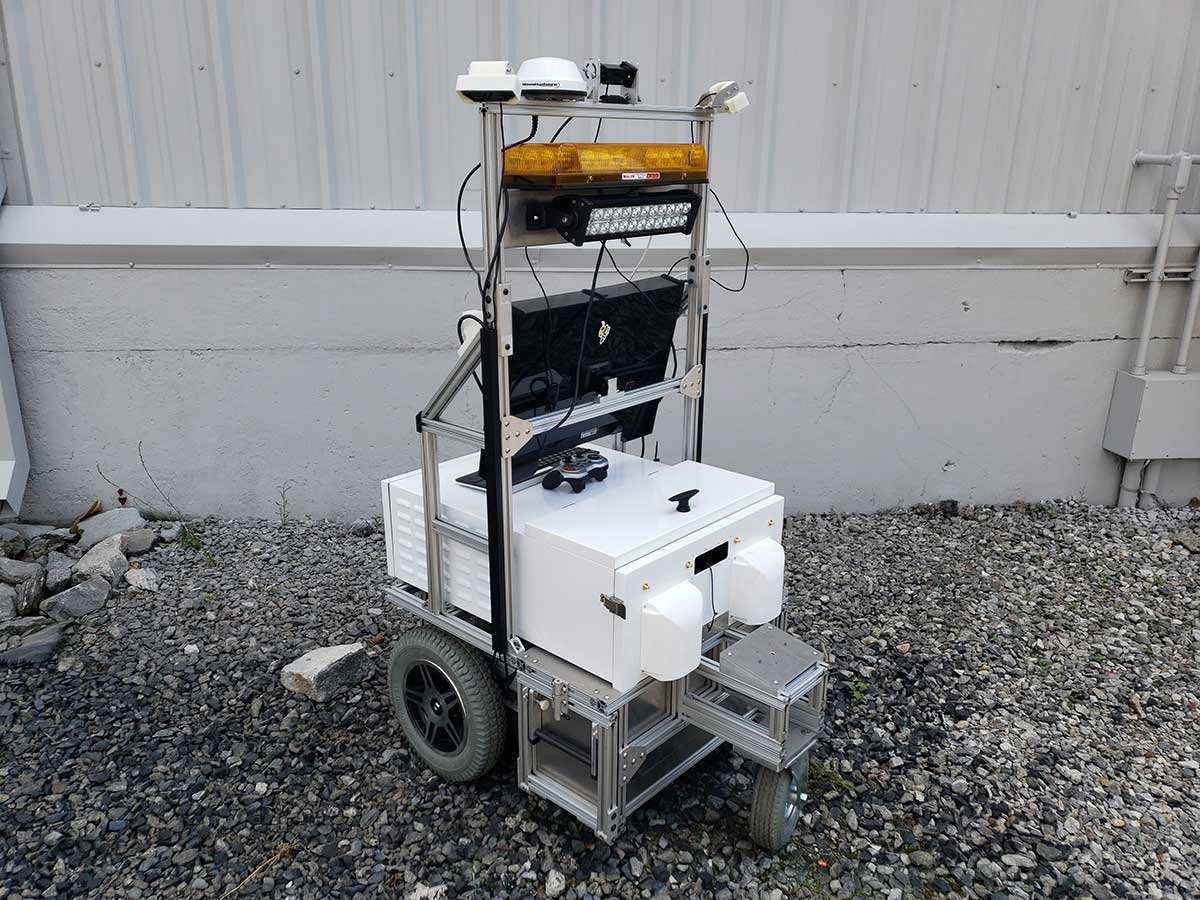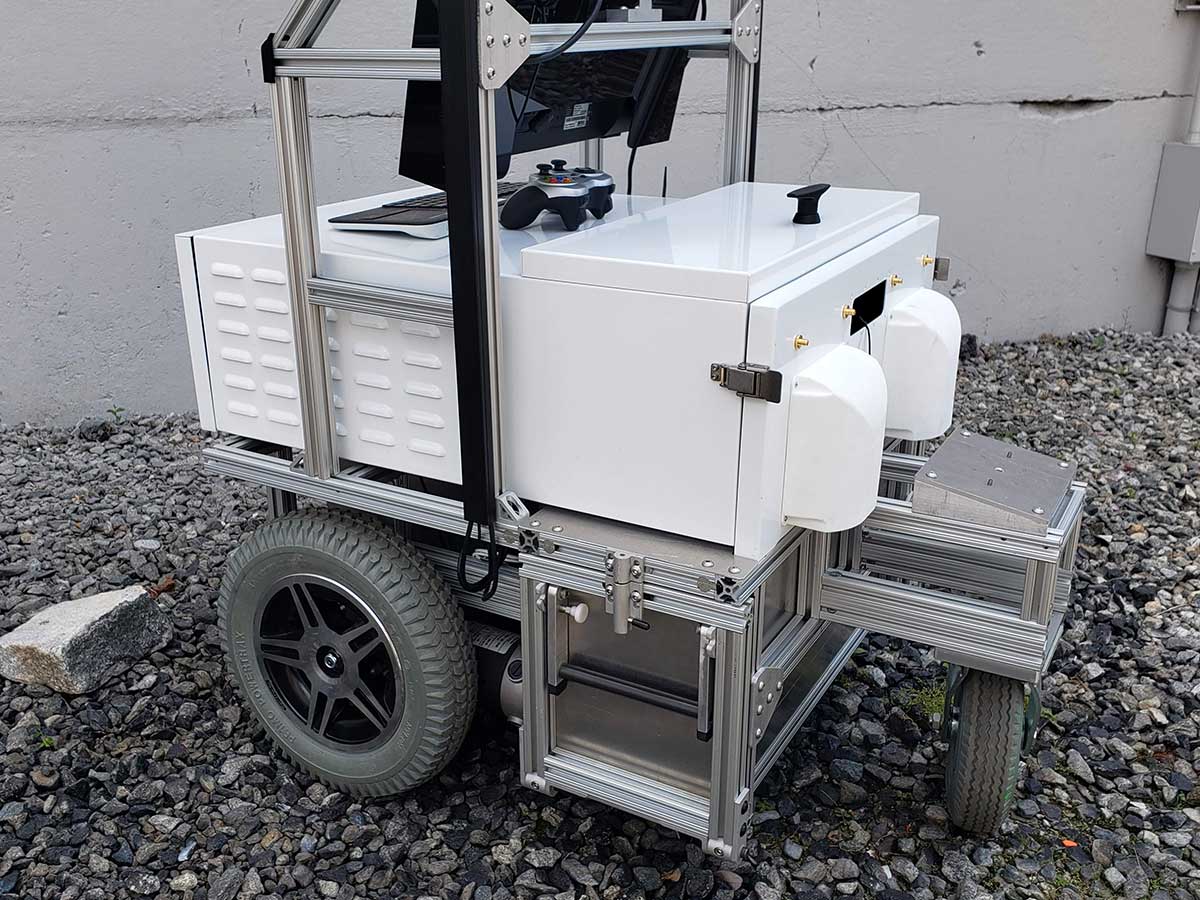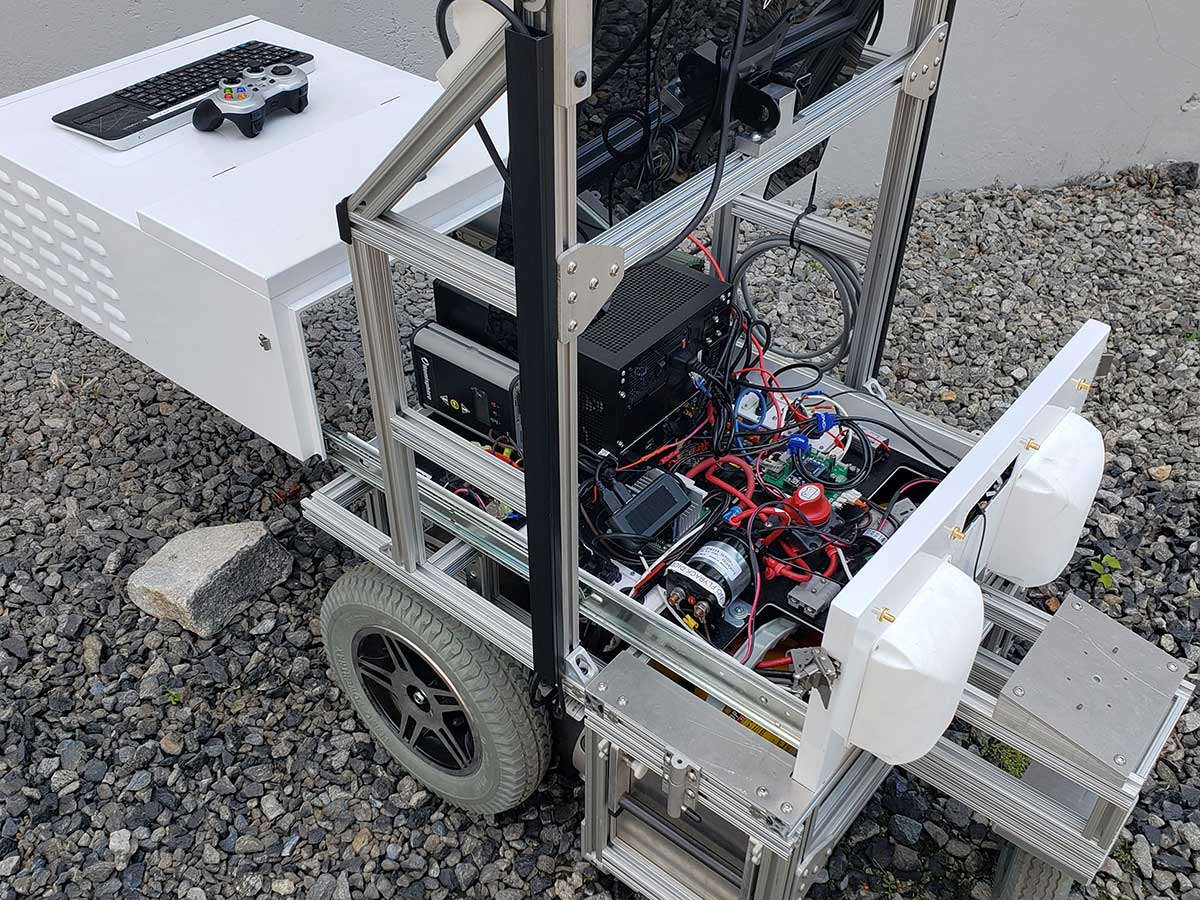
When RoboJackets, a multi-disciplinary student organization, formed at the Georgia Institute of Technology back in 1999, the mission was clear, though lofty - to promote, educate and advance the field of robotics through a combat robotics team. Since forming 20 years ago, its mission has grown to include several different arms: an outreach program for high-school robotics teams in the Georgia area, as well as RoboCup and RoboRacing, which participates in two different autonomous racing competitions. In total, the four competitive teams of RoboJackets regularly participate in multiple domestic and international competitions.
One of those competitions RoboJackets has been competing in since 2003 is the Intelligent Ground Vehicle Competition (IGVC).
This year, the team faced some design challenges with its robot, which prompted them use Protocase's services to help manufacture custom metal parts in order to bring their robot to the next level of design quality.
Intelligent Ground Vehicle Competition
Founded 27 years ago by the Association for Unmanned Vehicle Systems International as a research and design project competition wherein teams must design and build an autonomous ground vehicle that must complete a series of challenges.
"The robot has to navigate an obstacle course of barrels, potholes, and ramps in the shortest amount of time possible. The software we use on the robot relies on an array of sensors and requires high processing power," explains Yongjae Won, the team's mechanical lead. "This means that the robot has to be a stable platform to intake data, and has to house a large amount of custom electronics to execute mapping and path planning algorithms."
With the entire competition taking place outside, the team's primary goal from a mechanical standpoint was to safely encase electronics from the elements, as well as provide steady drive functions and prevent its sensors from being jostled.
Design Changes
The robot they made to participate in last year's competition had a few design issues. With the cover of the electronics enclosure sandwiched between the mast and base frame, the team found it extremely difficult to service the electronic components inside.
With this feedback in mind, the team wanted the 2019 cover to be modular and weatherproof - but easily accessible in case maintenance was required.
"Since the competition is held outdoors, the expensive custom computer and electronics needed to be protected," says Won. "We targeted ingress protection rating of IP43 during the design process, meaning protection from dust particles at least 1mm in size and from liquids falling from up to 60 degrees from vertical. After assembly, the cover's weatherproofing was tested and we confirmed that it conforms to the IP43 standard. "
In order to achieve this standard, the team added a combination of rubber seals and latches to every opening on the cover, including all access panels.
"The cover can also be completely detached for extensive repairs, and the entire cover with the electronics tray can be removed by undoing just four screws. Lastly, the high performance computer inside the cover with Intel Core i7 CPU and NVIDIA GTX1060 GPU needed to be cooled down," explains Won. "To minimize the heat transfer from the sun, we chose the glossy white color powdercoat. Then, the necessary amount of cooling airflow was calculated. Louvres were placed on the sides of the cover to allow exhaust air to move through the electronics tray, and openings for fans were left in front to draw in fresh air."
Designing and Manufacturing with Protocase
Working through their design, the students eventually decided to route the electronics through the bottom of the tray to allow the top of the enclosure to be easily removed, as well as use drawer slides to allow the cover to slide out.
After receiving an initial quote on their rough design, the team capitalized on Protocase Designer's easy-to-use features, which enables users to make design changes on the fly and get real-time price quotes.
"Our quote, in addition to the Protocase Designer's instant quote feature, helped us understand the pricing scheme so that we could minimize the cost by reducing the number of unique parts. Protocase Designer allowed the team to try different designs and instantly see how it affects the cost, which helped us stay within our budget," says Won. "Finally and most importantly, the parts met our needs perfectly. Overall, it was a great design experience from beginning to end."
When the team received their product they were pleased with the high quality parts they received. Using Protocase's different engineering capabilities helped the team to focus in on how to maximize the form and function of their part.
"Feedback from Protocase's engineering team and the Protocase Designer software helped us design for manufacturing. All the parts were within tolerance and assembled properly. The welds were clean, and the powder coating was beautiful and durable. The turnaround and shipping time was reasonable and everything was packaged well. All in all, we have no complaints and would definitely recommend Protocase for manufacturing services."
Competition Results
The team performed well at the competition, placing the highest in Georgia Institute of Technology's history. The team placed third overall and first in the design challenge. The cover they designed helped impress the judges during the design challenge.
"During the presentation and judge Q&A in the design challenge, several of the judges complimented our design and seemed very interested in the modularity of the case," says Won. "We believe this helped set us apart from our competitors."
The AuotNav challenge involved the robot needing to autonomously navigate an obstacle. Despite some hiccups, the team was very pleased with their performance.
"We faced some software and electrical issues which prevented us from achieving a solid run. However, we did better than we ever had in this competition. Although we did not place high in the AutoNav challenge, we still achieved good results that will help motivate us to take home first place overall next year."
Looking to the Future
With this year's personal best in mind, the RoboJackets are already looking forward to the 2020 competition, as well as new plans to help educate students and support the local robotics scene.
"Though we love our robot, Jessii, and we had a great experience at the competition this year, we will continue to design new bots and try out fresh ideas. The competition was overall an extremely fun and rewarding experience for the whole team."



